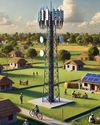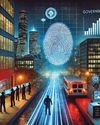
The Federal Communications Commission, the US communications regulator, voted and announced on 25 April 2024 that it is restoring Net Neutrality (NN) and re-establishing the national Open Internet (OI) standards. It has re-classified broadband services as common carriers under Title II of the Telecommunications Act and will regulate them as essential services.
The announcement unambiguously states that the FCC will ensure that the Internet is fast, open, and fair and will exercise its authority to protect the OI by “prohibiting ISPs from blocking, throttling, or engaging in paid prioritisation of lawful content, restoring the rules that were upheld by the DC Circuit in 2016.”
Both OI and NN are understood differently by different people in different contexts.
In simple terms, the term Open Internet emanates from the engineering design of the Internet itself. Unlike traditional telecom infrastructure, any network or its part, wired or wireless, such as devices, equipment, applications and users, can physically connect or interconnect by adhering to specific TCP/IP protocols and standards. As some say, the Internet has been a permissionless network (arguably) meant to move ‘all information’ as data from origination to destination.
NN technically flows from the OI design. It is more of a techno-socio-economic principle since no technical or commercial discrimination is allowed between the class of users and traffic (with exceptions), thereby leading to ‘the network effect’ (where the more the users, the more the network value gets enhanced).
Diese Geschichte stammt aus der May 2024-Ausgabe von Voice and Data.
Starten Sie Ihre 7-tägige kostenlose Testversion von Magzter GOLD, um auf Tausende kuratierte Premium-Storys sowie über 8.000 Zeitschriften und Zeitungen zuzugreifen.
Bereits Abonnent ? Anmelden
Diese Geschichte stammt aus der May 2024-Ausgabe von Voice and Data.
Starten Sie Ihre 7-tägige kostenlose Testversion von Magzter GOLD, um auf Tausende kuratierte Premium-Storys sowie über 8.000 Zeitschriften und Zeitungen zuzugreifen.
Bereits Abonnent? Anmelden

Wiring the future to bridge rural India's education divide
Expanding broadband in rural India will empower students with digital tools, virtual classrooms, and quality education, bridging the learning divide.

THE GREAT INDIAN TELECOM CRISIS QUALITY OF SERVICE
Despite rapid 4G and 5G expansion, call drops, erratic speeds, and poor support continue to erode consumer trust in India's telecom sector.

Rewiring the telecom maze with intelligent networks
AI-driven automation is reshaping telecom networks, boosting efficiency, minimising downtime, and ensuring seamless connectivity amid rising demand.

Connecting space and intelligence
Supercomputing is revolutionising space exploration and digital connectivity, enabling real-time data processing, AI-driven insights, and seamless communication.

Solving the AI energy puzzle in data centres
GenAI’s soaring power needs are pushing data centres to the limit, driving a shift to on-device AI processing for efficiency, speed, and sustainability.

Navigating uncharted waters in telecom
DeepSeek is shaking up AI, forcing industry giants to rethink strategies while opening new capacity streams for telcos—both as providers and consumers.

Bridging last-mile connectivity with FRP solutions
Fibre-reinforced polymer solutions can transform rural telecom by enabling durable, cost-effective, and scalable rural digital infrastructure.

Will the Airtel-Tata Play merger breathe new life into DTH?
The merger seeks to redefine India's DTH market through telecom, broadband, and content bundling, but can it withstand OTT's rising dominance?

Breaking barriers or building roadblocks?
Quantum technology is redefining secure networks, but technical, regulatory, and scalability hurdles could determine whether it thrives or stalls.

Your data, their gold: The silent battle for digital freedom
As data fuels profits, the battle for digital freedom intensifies, with businesses, governments, and hackers exploiting personal information and raising privacy concerns.